The Meizu M3 Note vs. Xiaomi Redmi Note 3 Review: Comparing Notes
by Matt Humrick on July 12, 2016 8:00 AM EST- Posted in
- Smartphones
- Mobile
- Xiaomi
- Meizu
- Redmi
Design
It’s increasingly difficult to find phones made entirely from plastic anymore. Aluminum unibody construction, once reserved for only the most expensive flagships, is almost as common as fingerprint sensors now, with even lower-priced phones readily adopting the technique. The M3 note, Redmi Note 3, and the Honor 5X we previously reviewed are all examples of this trend.
The M3 note follows the same design language as the more expensive MX5 and PRO 5. It’s aluminum chassis has a smooth, sandblasted texture with curved edges on the back and generously radiused corners that make it comfortable to hold. The Redmi Note 3 follows the same formula, giving it a similar in-hand feel. It does not feel quite as sturdy as the M3 note, however. Its chassis flexes just a little more and there’s an occasional creak, although it’s not enough to be a real concern.
The front of each phone is covered in edge-to-edge glass. The Redmi Note 3 has a shiny plastic lip around the perimeter that’s raised above the glass. This helps protect the screen when the phone is sitting face down on a table, but it reduces the smoothness of edge swipes and feels scratchy when placed against the ear during a phone call. The M3 note avoids these issues by blending the front glass into the sides with a small radius.
Both phones are similar in width and have reasonably narrow side bezels, but while the M3 note shows only a very thin black border around the screen, the Redmi Note 3’s black border is noticeably thicker—thick enough to be distracting during normal use. The Redmi Note 3 (150.0 mm) is distinctly shorter than the M3 note (153.6 mm), and even the Honor 5X (151.3 mm), because of its smaller upper bezel, although this does nothing to improve one-handed use as its lower bezel is about the same size as the others.
Both phones have relatively small earpieces centered above the screen, making it difficult to hear phone conversations if the earpiece is not perfectly aligned with the ear. The M3 note’s earpiece is flanked by its front-facing camera on the left and a combined ambient light/proximity sensor on the right, creating a nicely-aligned, symmetrical layout. A white notification LED is hidden below the front fascia to the right of the ambient light sensor. Xiaomi scorns symmetry and places the Redmi Note 3’s sensors, front-facing camera, and hidden multi-colored notification/charging LED all to the right of the earpiece.
These two phones handle UI navigation differently, which the button layout below the screen reflects. The M3 note has a pill-shaped home button that also functions as a fingerprint sensor and capacitive button. There’s no free play, and it still works when pressed off center with a positive click. Unlike many other phones with a physical home button, the M3 note does not place capacitive buttons to either side, which we’ll discuss more in the software section. In comparison, the Redmi Note 3’s lower bezel is more traditional. From left to right, there’s capacitive buttons for recent apps, home, and back. The buttons are backlit, but are not very bright, and the order cannot be changed.
Both phones place the sleep/wake button and single-piece volume rocker just above the midpoint on the right edge within easy reach. All of the buttons produce a nice, solid click, and are stiff enough to prevent accidental presses when picking up the phone, but there’s just a little more free play in the M3 note’s buttons. Each phone’s card tray sits opposite the volume rocker on the left side.
There’s a 3.5mm headphone jack and a noise-cancelling microphone on the top of each phone. The Redmi Note 3 also has a small window for its IR blaster. We see some big differences again when looking at the bottom of the phones. The M3 note uses a symmetrical layout with two sets of holes flanking a central microUSB port. Its single speaker sits behind the right grille, while the primary microphone sits behind the left. Once again Xiaomi shuns symmetry, placing its microphone and microUSB port in the left corner. This placement could lead to compatibility issues with some third-party docks/peripherals that are designed for a central port.
Flipping the phones over we see that both rear cameras are centered within a circular black surround with polished accent and sit flush with the flat aluminum back. Both phones also hide their antennas behind plastic caps at the top and bottom of the phone instead of incorporating plastic antenna lines like we usually see on all-metal phones. The color and texture of the caps closely match the metallic finish on the back, although there is some color variation when viewed from different angles or in certain lighting conditions. Meizu adds some decorative flair to the M3 note by machining some polished slots into the chassis, effectively hiding the seam between the aluminum back and plastic caps.
Unlike the M3 note, the Redmi Note 3’s fingerprint sensor is on the back. This is currently the most common location, although the ideal placement is a matter of personal preference. Placing the sensor on the back puts it within easy reach of the index finger when holding the phone, but it also eliminates the possibility of using it to unlock the phone when it’s resting on a table. The Redmi Note 3’s external speaker is also on the back underneath a series of small holes near the bottom.
While these phones are similar in materials and construction, they each communicate a different design language. Meizu makes heavy use of symmetry, beveled cover glass, and more complicated machining—the concave groove for the buttons on the side and the polished slots on the back—to help elevate the M3 note’s look and feel to flagship levels. Xiaomi’s styling for the Redmi Note 3 is more traditional, with a raised plastic lip around the screen and fixed capacitive buttons below. The Redmi Note 3 also lacks the symmetry and machining flourish of the M3 note. While I personally find the M3 note more visually appealing, neither phone looks or feels cheap. Even the color options—silver with white front, dark gray with black front, and gold on gold for the Redmi Note 3 and gold on white for the M3 note—are subtle and classy looking.


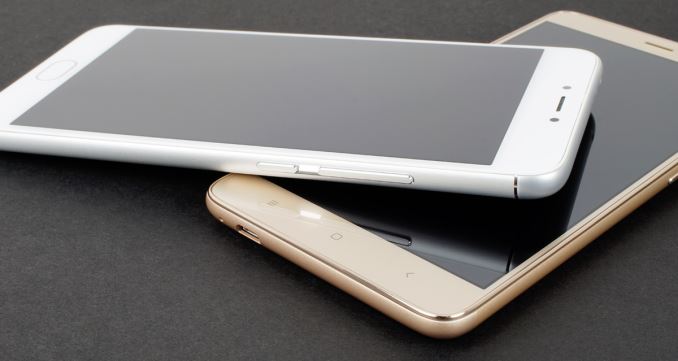
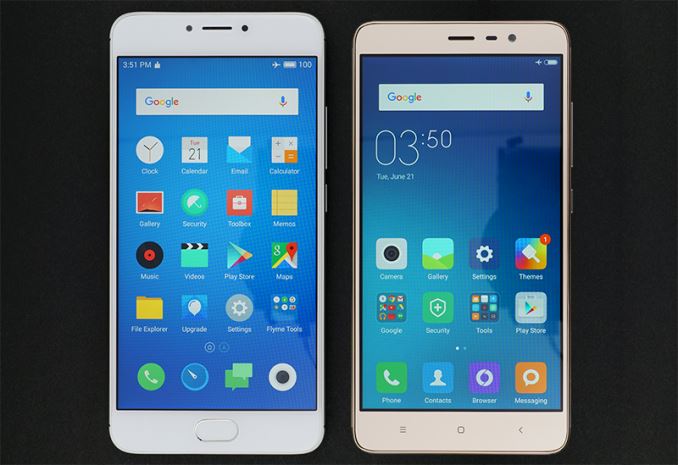

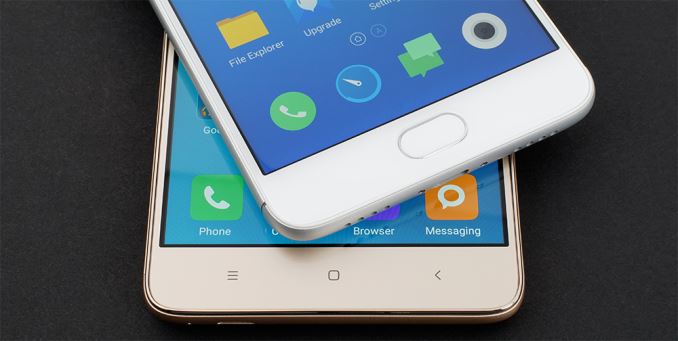
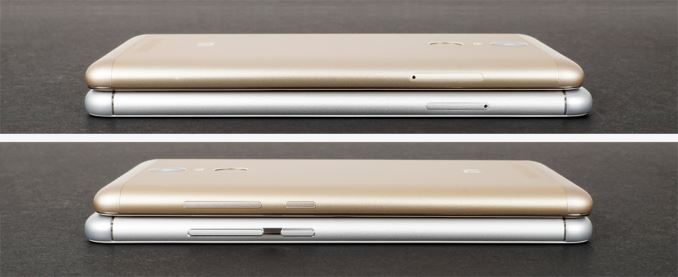

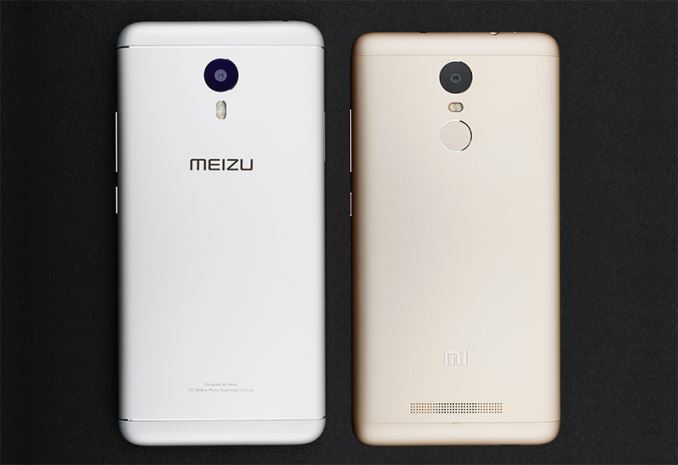
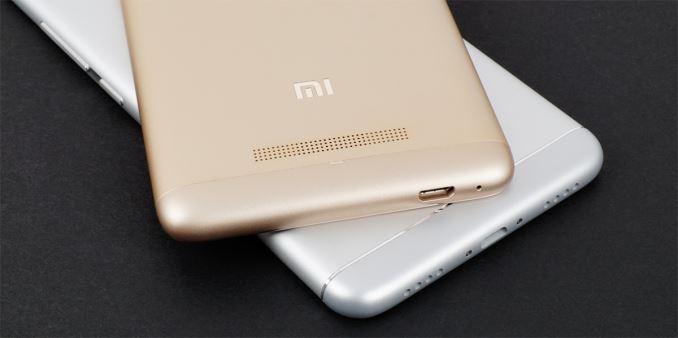








79 Comments
View All Comments
jospoortvliet - Wednesday, July 13, 2016 - link
Yeah, I appreciate the real life benchmarks but the software can be fixed, the hardware can not so it would be good to know where the potential of the phone lies. The measurement of the read and write speeds are very helpful in this regards but a more synthetic test would be nice, honestly I don't trust something like PCMARK at all.jospoortvliet - Wednesday, July 13, 2016 - link
I mean, "writing", "video", what are those supposed to test? Performance while writing get or playing video? Who cares, what phone has rouble with either of those tasks, a 2005 phone was fast enough...John Bens - Tuesday, July 12, 2016 - link
Nice comparison. Geekbuying actually has the M3 Note on sale at $152.99 which is a pretty good deal.Geranium - Tuesday, July 12, 2016 - link
Good phones. But as a Chinese phore there are two problems as usuali. UI
ii. Software update.
Are Chinese phone manufacturers shameless? Instead following Android design language they copy iOS design and feel good for it.
yoghibawono - Wednesday, July 13, 2016 - link
they dont try to copy. They follow what the majority of their country likes. Since early 2005 I believe even HTC and Huawei dont use any app drawer. And the fact that their UI is more user friendly, vast themes, feature-rich. Even if their base is kitkat; look whose first implementing permission manager? these chinese UI. Integrated backup-restore etc etc.Impulses - Thursday, July 14, 2016 - link
Uh, pretty sure HTC has an app drawer...aryonoco - Tuesday, July 12, 2016 - link
Thanks for the review Matt, much appreciated.Also thanks for the LTE bands support table. This is something that I've argued should be present in all reviews, and it's great to see it so prominently and clearly laid out.
In future, can I ask Anandtech to also focus on the Android Security Level that a phone runs? I find it increasingly disturbing that OEMs are ignoring Google's monthly security patches. One review of recent security bulletin shows that each month they are fixing serious vulnerabilities, some of them being kernel-level vulnerabilities with remote exploit capabilities. In my opinion it is irresponsible, borderline unethical for a manufacturer to release a handset with known remote root exploits and then fail to patch it.
It is one thing for an OEM to change the UI the way MIUI does, at the end of the day, these are matters of preference and taste. It is even acceptable in my view not to update the Android OS due to business/technical reasons. But not patching security vulnerabilities? That should not be acceptable. We need manufacturers to at least commit to supporting their handsets for the duration of their lifetime (whether that's two years or three years or whatever) with security patches. And we need to call out and name and shame those who don't. Frankly if websites such as AT don't do this, I don't know who will.
Let's put it this way, if say Windows 8 or Windows 10 had a remote exploit vulnerability, and yet a laptop running the said OS didn't get this vulnerability fixed in a reasonable amount of time (for whatever reason), AT and the whole tech media would be up in arms. At the end of the day, I don't care whether it's Google's fault or the SoC vendor's fault or the OEM's fault or the carrier's fault, these are contractual details and they can sort it out between themselves. The customer pays money to an OEM (or a carrier) and the customer's contractual agreement is with them. We need to call out this situation, hold the OEM, the carrier, Google and the whole ecosystem to account. As smartphones move ever more closer to becoming general purpose computers, and they hold vast amounts of our personal information, this situation is unacceptable.
abcdravi - Wednesday, July 13, 2016 - link
I agree.Pissedoffyouth - Wednesday, July 13, 2016 - link
XIaomi are very good at patching security updates from what I've foundaryonoco - Wednesday, July 13, 2016 - link
Great! So when you go to software info or about device (or whatever Xiaomi is calling it) you can see the Android security patch level? And they are mostly up to date? If this is true, it would make Xiaomi phones a hugely more appealing purchase in my opinion.And I think it would be great if a website as thorough as AT paid attention to this, and called it out.